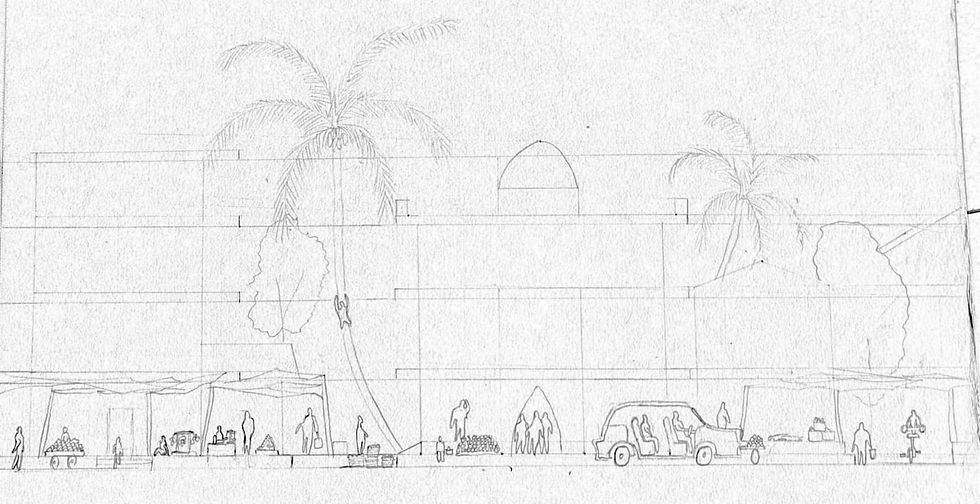Sketching out Ratnagiri
- Sahil Sawant
- May 27, 2022
- 2 min read
Updated: Nov 10, 2022
For our settlement studies, we went to Mirya - a village in Konkan. Before approaching the site the whole class was divided into five groups of 8 people each. PLAN, ECONOMY, HOUSES, CONSTRUCTION, I was in the Economy group. Within our group itself, we divided ourselves into subgroups to understand different sectors which encompass the growth of Ratnagiri's economy. I and my mate went to Ratnagiri's main market to understand the economical flow. Here are some on-site sketches,

This how the main market street of Ratnagiri looks like. The whole place is in the process of Transition from a village market to a more urban form of market. Still, the natives have maintained their intrinsic qualities in the city. As we were in May, the whole street was full of locals selling the king of Fruits, the Mango!

Vegetable Mandi ( Bhaji mandai ) was where fresh fruits and veggies are brought to the city from other districts and the rest of the state. The structure was a 2 story govt office which then turned into the sabzi mandi.

The kind of language that was getting repeated everywhere on the market streets of Ratnagiri was the narrow street between two structures, some having Mangalore tiles and cloth ties up to break the direct Sun.

Athavade Bazar was one of the busiest places I visited in Ratnagiri. We studied the import and export of Vegetables happening in Ratnagiri. Various vegetables and fruits are sold on a high and small scale in the vegetable market and weekly market respectively. Some vegetables are brought from Mirya gaon whereas some are from outside Ratnagiri. Mangoes are the main source of income there. Also observing the houses there we came to know that it is a densely populated area where big buildings also occupy a small area.






Overall understanding of the Economy of Mirya gaav





Comments